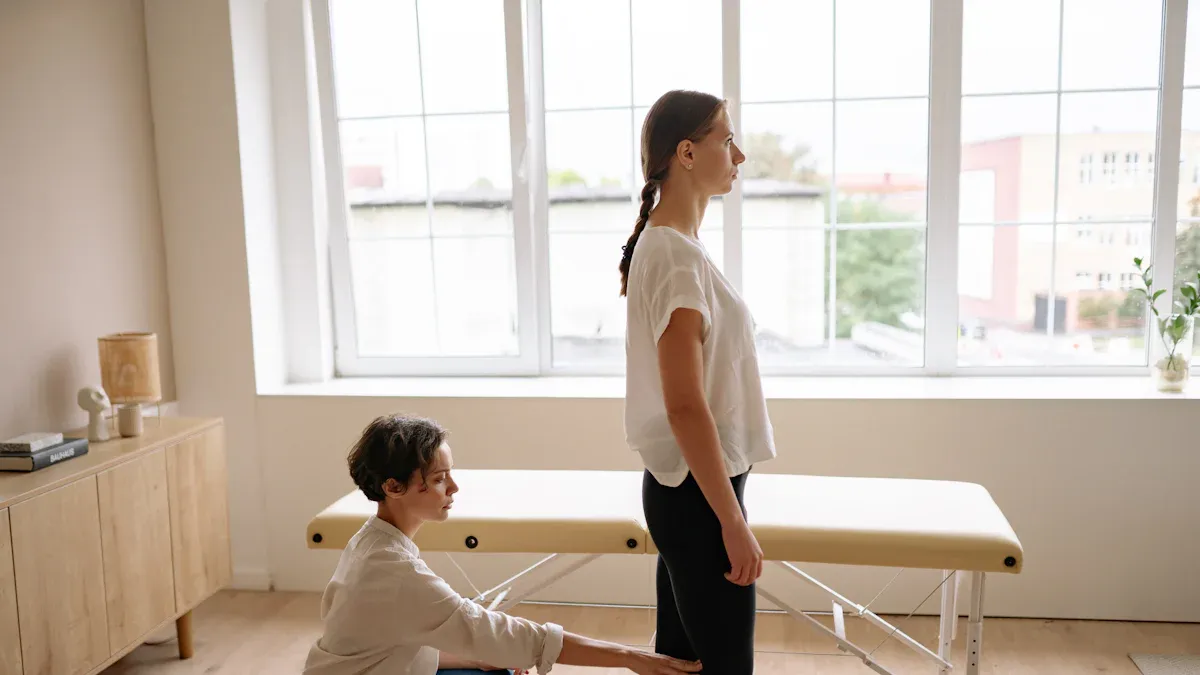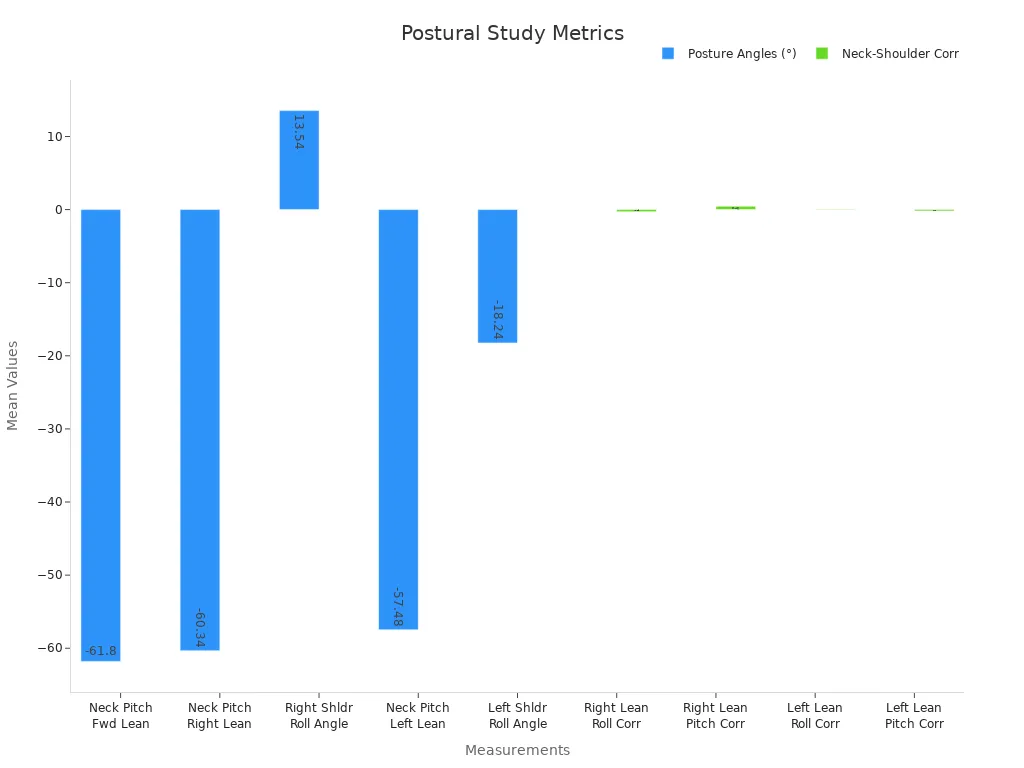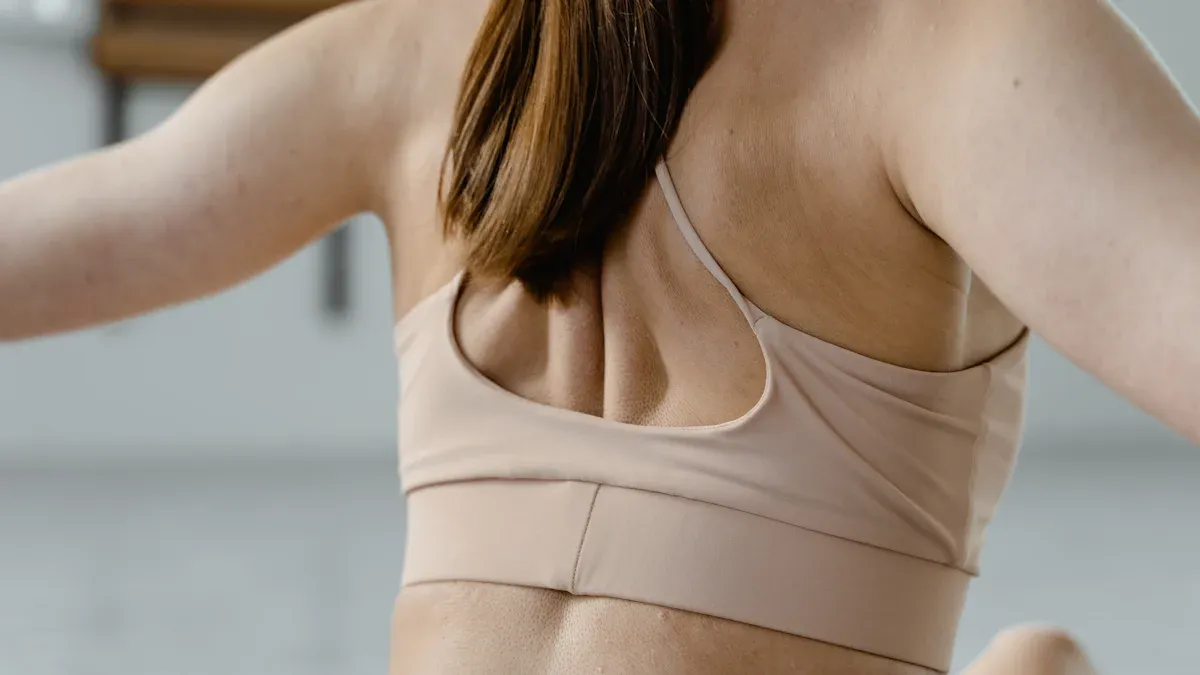
You might wonder if you should wear a posture corrector every day. Experts say you can use a posture corrector to remind yourself about good posture and help your muscles work better. You should not wear it all day. Most experts suggest using it for only 1 to 2 hours each day. If you use it too much, your postural muscles may weaken or feel uncomfortable. Many people notice they stand straighter and feel more aware of their posture with short, regular use. No expert research gives exact numbers for benefits or risks, but you should listen to your body and think about your own needs.
Key Takeaways
- Wear a posture corrector for short times, like 1 or 2 hours each day. This helps your body remember good posture. It does not make your muscles weak.
- Use a posture corrector with exercises that make your back and core strong. This helps your posture get better and can stop pain.
- Do not wear posture correctors all day. This can make your muscles weak. It can also make your skin sore. You might start to rely on the device too much.
- Pay attention to your body. Stop using the device if you feel pain or feel uncomfortable. Ask a healthcare professional for help if you need it.
- Use posture correctors as part of a bigger plan. This plan should have exercise, good habits at your desk, and help from professionals. This gives you the best results.
Posture Corrector: Daily Use?
Expert Recommendations
You might ask how long to wear a posture corrector each day. Most experts say not to wear it all day. Rahul Shah, who is an orthopaedic surgeon, says to use it for no more than one hour a day. This advice helps you use it as a reminder, not as something you always need. Wearing it for short times helps your muscles remember the right way to sit or stand. You will also notice your posture more when you sit or walk.
Tip: Begin with 30 minutes each day. If you feel fine, you can slowly wear it longer, up to two or three hours. Always pay attention to your body and stop if you feel pain.
Experts also say to use exercise with posture correctors. This makes your back and core muscles stronger. Do not only use a posture corrector to fix bad posture. It should be part of a bigger plan to help your posture and lower back pain.
Who Should Avoid Daily Use
Some people should not use a posture corrector every day. Wearing it too long can make your muscles weak. Your body might start to rely on the device instead of its own strength. Experts warn that using posture correctors too much can make muscles weaker and cause you to depend on them. There is no proof that daily use always causes muscle loss, but many doctors see this problem.
- Posture braces can help support your back and ease pain.
- Wearing a posture corrector too long can weaken your muscles.
- You might depend on the device if you use it for many hours every day.
- Experts say to use posture correctors with exercise and physical therapy.
- A study showed posture braces did not give extra help when used with exercise and learning.
If you have health problems, talk to a chiropractor before using a posture corrector. People with skin allergies, new injuries, or serious back problems may need something else. Children and teenagers should only use posture correctors if a healthcare professional says it is okay.
Remember, posture correctors are tools for training. They help you learn good habits, but they do not fix posture forever. You need to stay active and make your muscles stronger for lasting results.
Benefits of Posture Correctors

Postural Awareness
Posture correctors help you notice how you sit and stand. When you wear one, you feel gentle pressure on your back and shoulders. This feeling reminds you to keep your posture straight. Over time, many people see their posture get better. You start to notice when you slouch or lean forward. This is called postural awareness.
A small clinical study looked at how posture correctors change neck and shoulder movement. The results showed people could hold their neck and shoulders in better positions. The table below shows some results from this study:
| Measurement/Aspect | Numerical Result | Description/Interpretation |
|---|---|---|
| Neck Pitch Angle (forward lean) | Mean: -61.80°, SD: 1.45° | Precise measurement of neck angle during forward-leaning posture |
| Right Shoulder Roll Angle | Mean: 13.54° | Shoulder angle during right lean |
| Comfort Rating | Mean: 4.4, SD: 0.80 | Comfortable fit due to soft, flexible materials |
| Overall Effectiveness Rating | Mean: 4.3, SD: 0.78 | Vest highly effective in aiding posture correction |

The chart shows that people found posture correctors comfortable and helpful. This means you can use them to train your body to stay in the right position. They can also help stop pain caused by bad posture.
Relief from Back Pain
Many people use posture correctors to help with back pain. If you have pain from sitting or standing too long, a posture corrector can support your back. This support helps your spine stay healthy. You may feel less pain if you use a posture corrector for short times each day.
Some studies show that using posture correctors can lower back pain. For example, one study with 222 people found less back pain after 48 days of wearing a back support. Another study showed people had less pain and stronger muscles after wearing a lumbar belt for six weeks. The table below shows some of these results:
| Study (Author, Year) | Sample Size | Intervention Duration | Intervention Type | Comparison | Key Outcomes |
|---|---|---|---|---|---|
| Oleske et al., 2007 | 222 | 48 days | Back support orthosis | Education | Significant decrease in low back discomfort |
| Calmels et al., 2009 | 102 | 6 weeks | Lumbar belt orthosis | No belt | Lumbar support reduced pain scores |
| Shakoor et al., 2015 | 42 | 4 weeks | Lumbosacral corset | ADL instruction training | Decrease in chronic low back pain |

You can use posture correctors as part of your plan to manage back pain. They help you keep good posture, lower discomfort, and support your back muscles. Remember to use them for short times and add exercise for the best results.
Risks of Overusing Posture Correctors

Muscle Weakening
You might think that wearing posture correctors for long hours will fix your back pain. In reality, your muscles can become weaker if you rely on these devices too much. Your body needs to work to hold you upright. When you let a device do all the work, your muscles stop trying. Over time, this can lead to poor posture and even more pain. You may notice that your back feels tired or sore when you stop using the device. This happens because your muscles have lost strength. To avoid this, use posture correctors only for short periods. Try to stand and sit tall on your own as much as possible.
Skin Irritation
Wearing posture correctors for too long can also cause skin problems. The straps and fabric can rub against your skin. You may see redness, itching, or even blisters. If you sweat while sitting or moving, the risk of irritation increases. Some people with sensitive skin get rashes or spots. You should check your skin every day. If you see any marks or feel pain, take off the device. Clean your skin and let it rest before using the device again.
Dependency
You can become dependent on posture correctors if you use them too often. Your body may forget how to keep good posture without help. This can lead to poor posture when you are not wearing the device. You might also feel more back pain when you stop using it. Experts say you should listen to your body. If you feel pain or notice more slouching, take a break. Focus on exercises that make your back and core stronger. This will help you avoid bad posture and reduce back pain in the long run.
Note: Always pay attention to how your body feels. If you notice more pain or discomfort, stop using the device and talk to a healthcare professional.
Best Practices for Safe Use
Recommended Duration
Start with short sessions when using a posture corrector. Try wearing it for 30 minutes each day. If you feel okay, slowly add more time. You can wear it for up to one or two hours. Do not wear it all day. Your muscles need to work by themselves. Always look at your skin for any redness or sore spots. Take breaks so your body can rest.
Tip: Pay attention to your body. If you feel pain or discomfort, take off the device and rest until you feel better.
Combining with Exercise
You get better results if you use posture correctors with exercise. Strong back and shoulder muscles help you keep good posture. Clinical studies show that corrective exercise programmes make shoulder muscles stronger. These programmes fix muscle imbalances and help your posture improve. Experts say you should use posture aids, exercise, and healthy habits together for the best results.
- Corrective exercises make muscles stronger and improve posture (p = 0.002, p = 0.009, p = 0.025).
- Posture correctors help your muscles learn to hold good posture.
- Using both together lowers your chance of injury and helps you build good habits.
A chiropractor can show you safe exercises. You can ask for a plan that is right for you.
Combining with Chiropractic care
You might want to add chiropractic care to your routine. Chiropractors can check your spine and posture. They use gentle moves to help your body work better. Some people feel more support and relief when they use chiropractic care, posture correctors, and exercise together. Always talk to your chiropractor before trying new treatments.
When to Seek Advice
Ask for advice if you have pain that does not go away, skin problems, or health worries. A chiropractor or healthcare professional can check your posture and give you the best plan. Children and teenagers should only use posture correctors if a professional says it is safe. If you are not sure, always ask for help.
Alternatives for Back Pain and Posture
Chiropractic treatment
You can visit a chiropractor if you want help with back pain or posture. Chiropractors use their hands to adjust your spine. These adjustments can help your body move better. You may feel less pain after a few sessions. Some people notice better posture and less stiffness. Always choose a qualified chiropractor. Ask questions about your treatment plan. If you feel pain during a session, tell your chiropractor right away.
Exercise and Stretching
Exercise helps your muscles stay strong. Strong muscles support your spine and keep your posture straight. You can try simple exercises like walking, swimming, or cycling. Stretching your back and shoulders can also help. Try to stretch every day. You may notice less pain and better movement. If you sit for long periods, stand up and stretch often. This keeps your body active and helps prevent poor posture.
Tip: Try to make exercise a daily habit. Even short walks or gentle stretches can make a big difference for your back.
Ergonomic Adjustments
You can change your workspace to help your posture. Use a chair that supports your back. Keep your feet flat on the floor when sitting. Place your computer screen at eye level. This helps you avoid slouching. If you use a phone or tablet, hold it up instead of looking down. A height-adjustable table helps to avoid prolonged sitting. Good ergonomic habits can lower your risk of back pain and discomfort.
Professional Support
You may need extra help if you have ongoing pain or posture problems. A chiropractor can teach you exercises to improve posture. They can check your movement and give you a plan. Sometimes, you need more tests to find the cause of your pain. Always ask for help if you feel unsure. Early support can stop small problems from becoming serious.
Remember, you play the biggest role in your own health. Active steps like exercise, stretching, and good habits work better than relying only on devices.
You should use a posture corrector for short periods each day. Focus on building strong habits for better posture. Try to add exercise and healthy routines to your daily life. If you feel pain or discomfort, listen to your body. Ask a healthcare professional for advice if you have questions. Good posture can help you feel better and move with confidence.
If you are looking for posture correction or back pain relief, consult our highly-trained chiropractor at Acme Chiropractic Clinic in Castle Hill.
Remember, you control your own progress. Small changes can make a big difference.
FAQ
Can you sleep wearing a posture corrector?
You should not wear a posture corrector when sleeping. Your body needs to rest at night. Wearing it in bed can make you feel uncomfortable. It might also cause skin problems. Only use it during the day when you are awake and moving.
How do you clean a posture corrector?
Most posture correctors need to be washed by hand. Use gentle soap and cool water for cleaning. Let it dry in the air, not in a dryer. Always look at the care label for any special steps. Clean it often so it stays fresh and nice to wear.
Will a posture corrector fix your posture forever?
A posture corrector helps you learn better habits. It will not fix your posture for good. You must make your muscles strong and stand or sit well every day. Exercise and healthy habits help you keep good posture for a long time.
Can children use posture correctors?
Children should only use posture correctors if a healthcare professional says it is safe. Their bodies are still growing and changing. A doctor or physiotherapist can give the best advice for young people.







